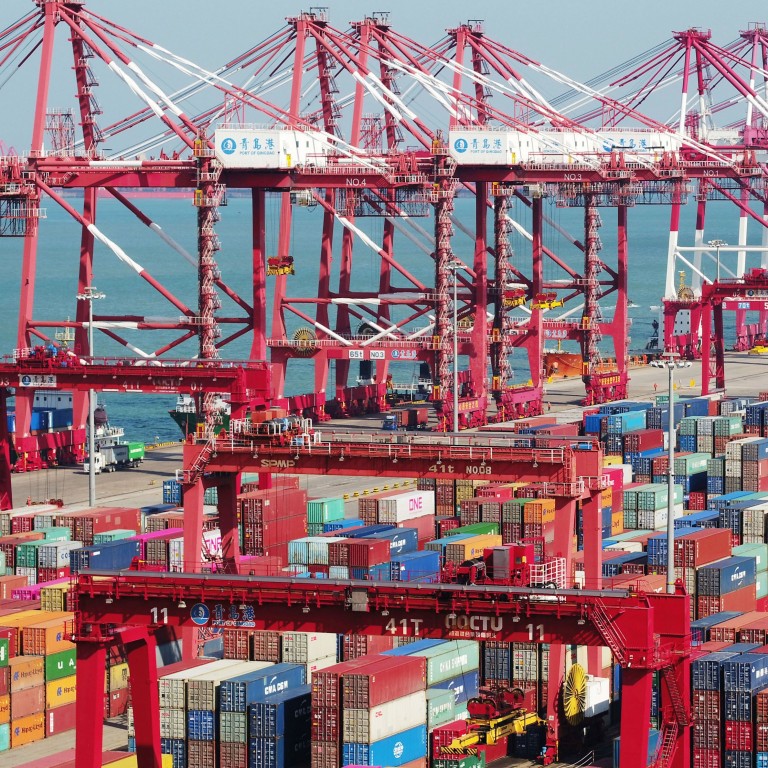
Coronavirus: China’s ports reach ‘turning point’ as Covid-19 backlog clears
- Crane operators, customs officers, tugboat pilots and other key logistics links have began to slot into place after lockdowns across the country had led to congestion
- China is the largest container cargo handler – processing around 30 per cent of global traffic or around 715,000 containers a day in 2019
China’s top container ports are loosening the backlog of cargo on their docks as workers return after coronavirus travel curbs that kept them away and jammed up global supply chains have been eased.
China is the largest container cargo handler – processing around 30 per cent of global traffic or around 715,000 containers a day in 2019 – and the virus clampdown impacted supply chains of everything from trainers and machine parts to technology components and food items.
That was around 15 hours longer than the week before the holiday, and nearly 20 hours more than the average in early January before the travel restrictions, according to Shanghai International Shipping Institute (SISI) data.
But turnaround times at Zhoushan and other ports are starting to improve as more container crane operators, customs officers, tugboat pilots and other key logistics links slot back into place.
“The turning point has arrived … We are seeing that port congestion has eased and logistics start to revive,” said Xu Kai, director of the Shipping Information Research Institute at SISI.
A shortage of truck drivers to ferry containers in and out of the port has caused crucial bottlenecks.
The city of Ningbo, which includes Zhoushan, has 24,000 registered container truck drivers, 95 per cent of whom come from other regions, according to the Ningbo-Zhoushan port authority.
According to the port authorities, the city had only 800 truck drivers working as of February 12, not enough to handle normal port throughput.
After port authorities offered food and accommodation support for returning drivers, and chartered buses to bring them back, Ningbo reported nearly 7,000 truckers had returned to work by last Friday.
Processing rates at Zhoushan surged as a result, with up to 13,235 twenty-foot-equivalent unit (TEU) containers clearing the port on Saturday, compared to only five TEUs six days earlier, according to SISI data.
We have seen much less logistic stress since last week as ports in southern China started to resume operation
While processing rates remain well below the port’s daily average of just over 75,000 TEUs in 2019, the improved flow is being noticed.
“We have seen much less logistic stress since last week as ports in southern China started to resume operation,” said a manager at the port of Yingkou in the northeastern province of Liaoning.
Some ports have even managed to surpass processing rates from last year in an effort to clear the backlog.
Shanghai’s port of Yangshan, the biggest deepwater container port in China, cleared 59,800 TEUs last Thursday, exceeding the average daily volume in 2019 of 54,200 TEUs, the port said.
Chinese ports are also seeing fewer vessels divert to other destinations because of the backlog, with 61 container vessels redirected from China last week, down from a peak of 144 in early February.
Purchase the China AI Report 2020 brought to you by SCMP Research and enjoy a 20% discount (original price US$400). This 60-page all new intelligence report gives you first-hand insights and analysis into the latest industry developments and intelligence about China AI. Get exclusive access to our webinars for continuous learning, and interact with China AI executives in live Q&A. Offer valid until 31 March 2020.

